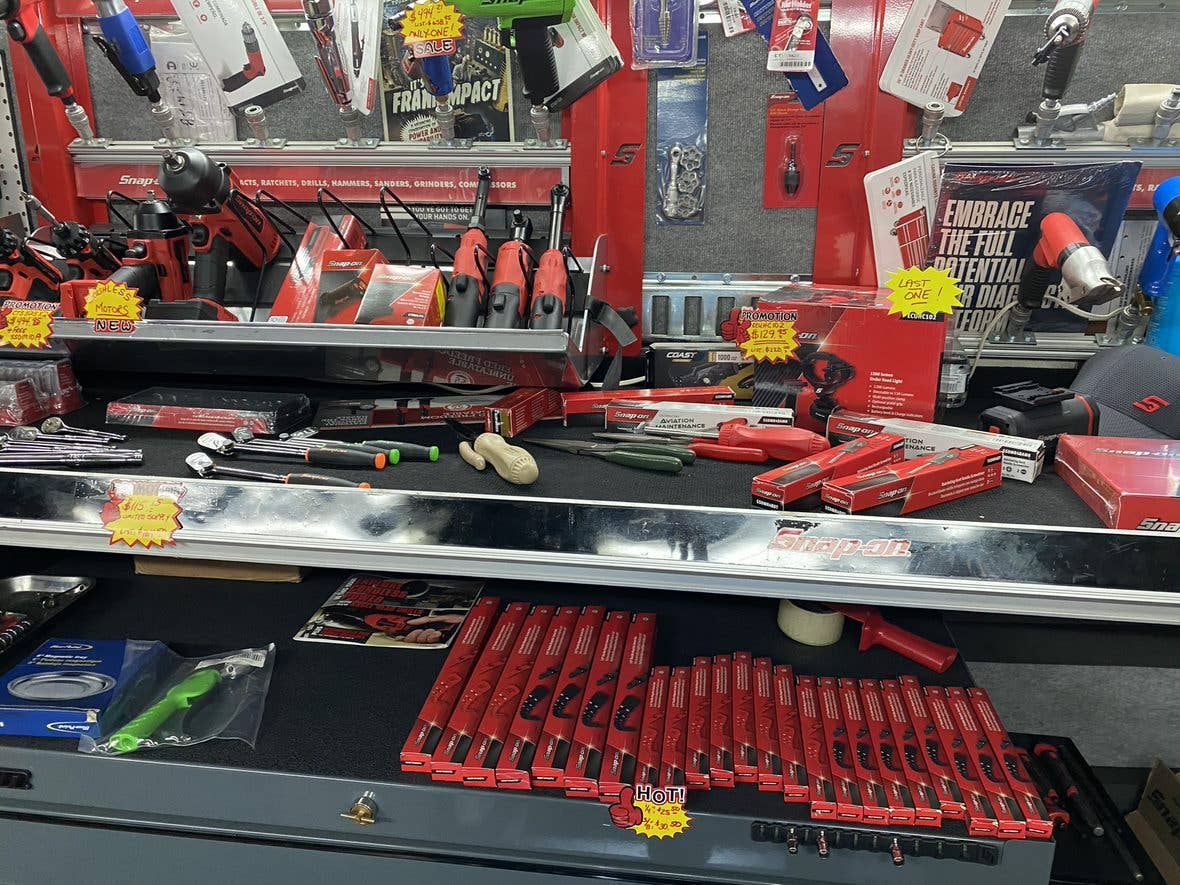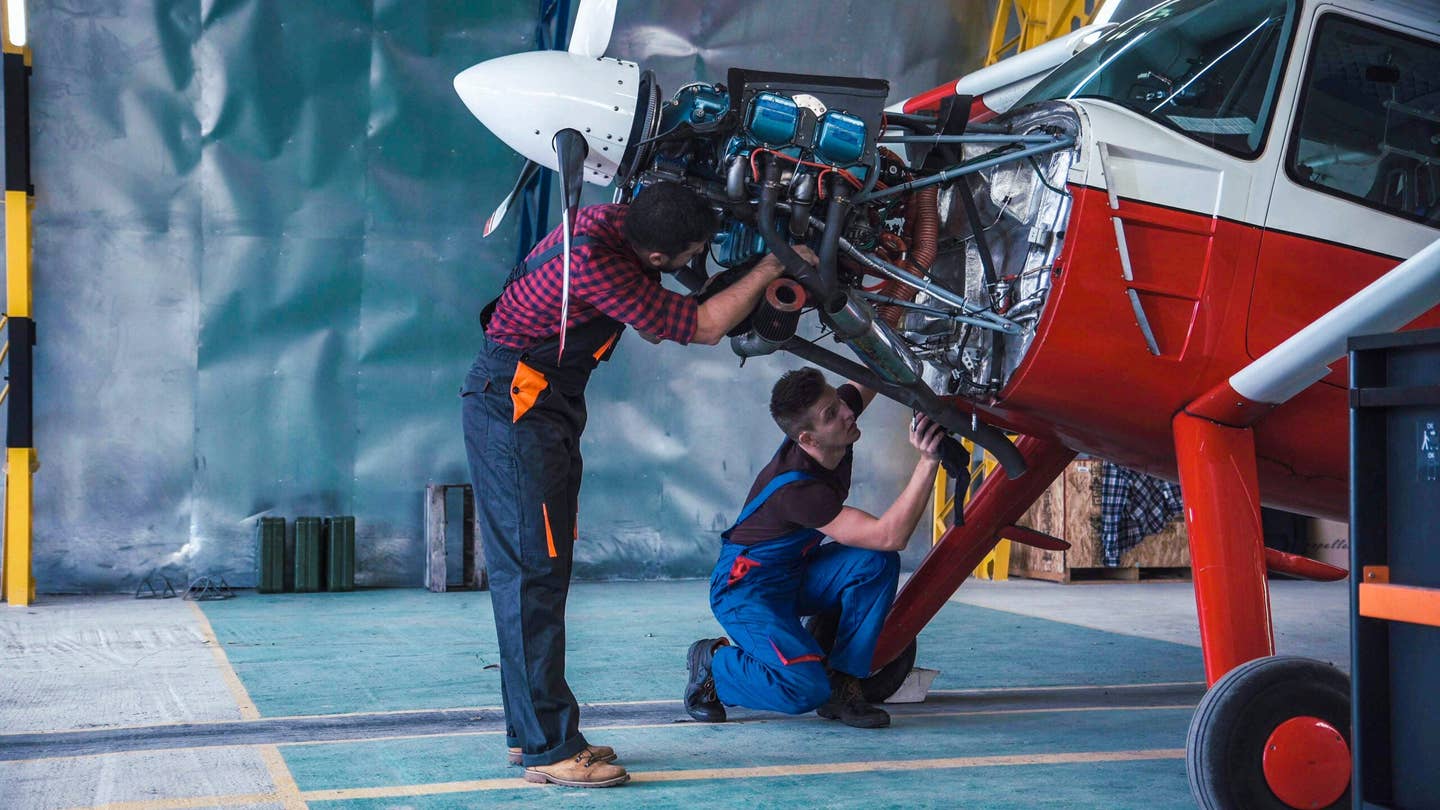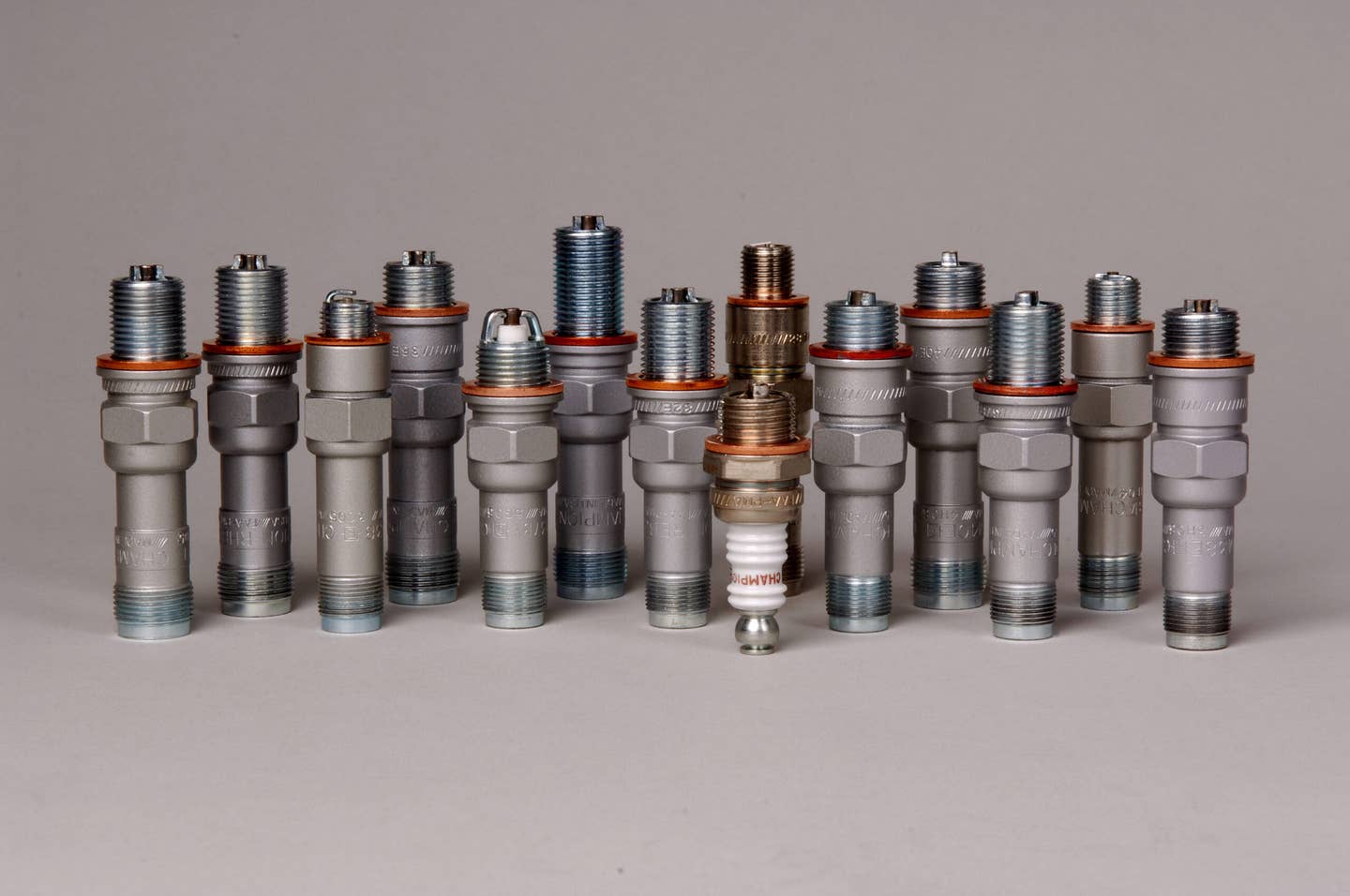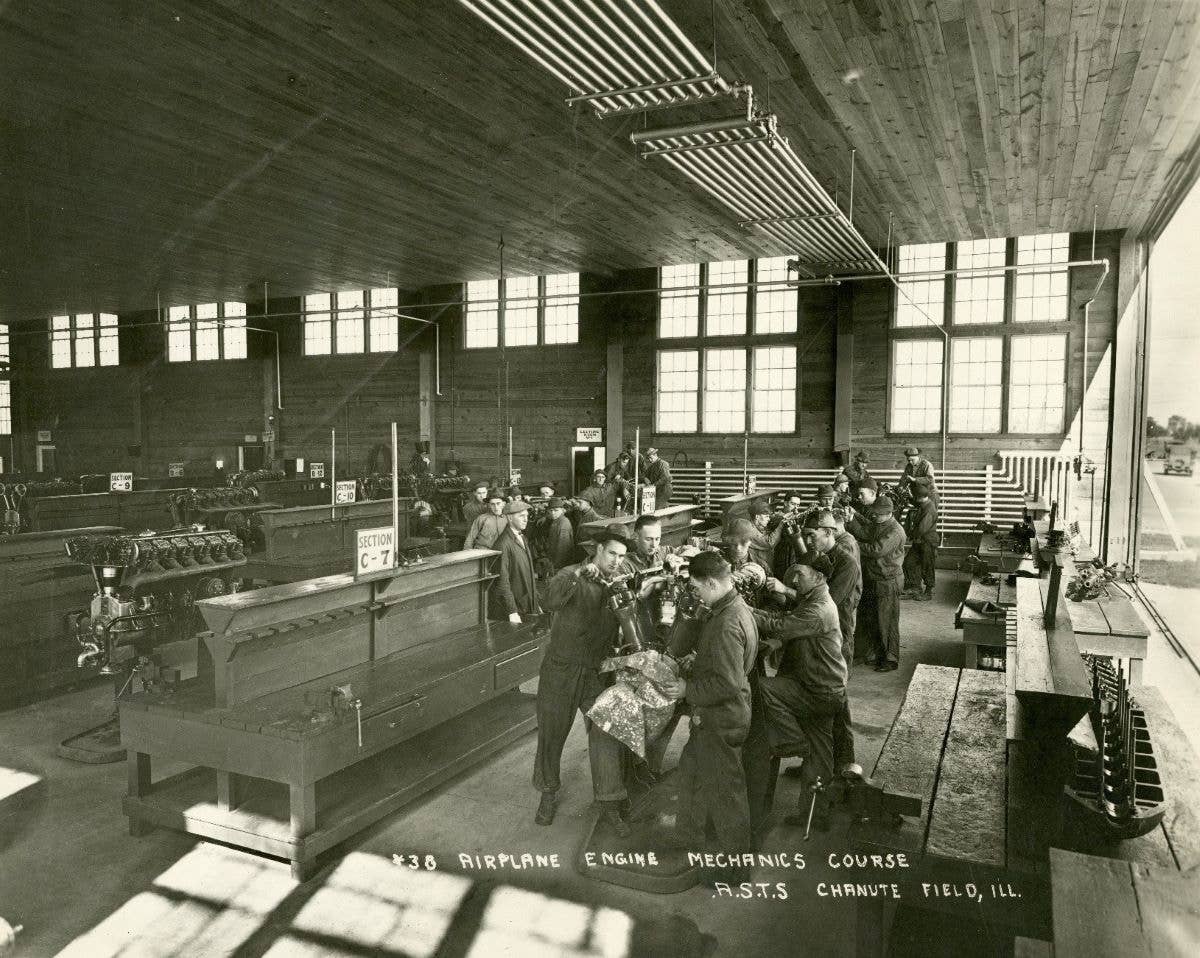The Wide World of Hand Tools
Tool trucks can be worlds of enchantment, so it’s important to know your way around.

What wonders await on these shelves? [Photo: Richard Scarbrough]
I step from the hangar and walk briskly toward the front parking lot. Is he here yet? My breathing relaxes as I double-check the PDF schedule on my phone and verify the first and third Wednesday of each month. We should be good.
With a black and red motif accented by mirrored chrome, the Snap-on truck strikes an impressive presence next to electric cars parked at their charging stations. Finally, the gleam of brightly polished metal appears on the horizon. The colors are not by happenstance. Marketing coordinator Calvin Emerson describes each as:
- Black - powerful, sophisticated, edgy
- Red - passion, importance, attention
Much like merchants of old, the truck is here to engage in commerce. My eyes take a moment to adjust. Rows of pliers adorn the ceiling, lined up like ships from the U.S. Navy Fifth Fleet. Ratchets arranged from tallest to shortest sparkle and beckon me to take them back with me to their forever home. Screwdrivers packed as families with a papa, mama, and three offspring tucked neatly in their cases. The possibilities are endless.
The tool truck is akin to Mr. Magorium's Wonder Emporium for grown-ups. Much like the magical world of the 2007 Dustin Hoffman film, enchantment permeates the space, and your money magically disappears right out of your account. Fret not—a trader of tools can be a reasonable soul if they are in a fair mood.
Read on, traveler, and learn the ways of the tool.
Building Your Collection
When we last left, our hero, 21-year-old me, was balancing on a nose tire trying to remove a canopy selector valve on the ramp in the rain. Fast forward 31 years, and although I make my living with a laptop these days, I still maintain the same tooling position I did as an airframe and powerplant (A&P) mechanic. It took years to amass my collection, and I continue to supplement it with new additions whenever needed.
How is your tool kit coming? Where should one begin? Start with the basics and work up as you go. We are in aviation, an industry dominated by checklists, so let's look at a few.
I highlighted this before, but it is worthy of a re-post—the Embry Riddle Aeronautical University (ERAU) general and advanced recommended tool kits.
Snap-on builds kits specifically for aviation and offers its tools in kits or stand-alone pieces,
Mac Tools does not single out aviation as a specific business segment but offers hand tool collections.
I, like others, have an ebb and flow relationship with my tools. After a big job, it is common for everyone to gather in a circle and retrieve their possessions, often squinting in bad lighting after a long night's work. Try as you might, tools inadvertently change owners; however, sometimes, you can exchange them back in an impromptu swap-meet. I have a crucial strategy to circumvent this. Keep reading to learn this time-honored secret.
How does one amass a tool collection worthy of an A&P? It boils down to three basic but essential elements:
1. Money
2. More money
3. And even more money
But seriously, there are ways to build out your tool kit and stay married, and I am living proof. The first step is to admit you have a problem. Sorry, that is the wrong list; I mixed up my notes. Absolutely the number one rule in tool acquisition is quality. Crappy tools lead to sloppy work, and sloppy work begets lousy maintenance. Inadequate maintenance equals unsafe aircraft. Do I need to keep breaking this down for you?
I honestly do not care what your brand of choice is. I have a wide variety, with a majority coming from the tool trucks that visit the various shops I worked at, Snap-on, Mac Tools, and Cornwell. In all seriousness, tool trucks are fantastic, and the operators are a great resource. Many are franchise owners with a vested interest in keeping their customers happy. I have held very spirited conversations with many of them and even engaged in a bit of bartering. Treat them respectfully, and you will be more apt to get a deal.
If you do not have access to a tool truck, catalogs are your next best option. Some are still in print, but many are online-only now. All major brands have them; some even run sales to move older inventory. Do you care if the screwdriver handle is last year's color? But remember the golden rule: quality first.
Other excellent sources for obtaining tooling at a discount are swap meets, thrift stores, and estate sales. If you stick to the quality tool products, then the "guarantee" and lifetime warranty stay with the tool, not the owner. My maternal grandfather Carl F. Williams Sr., longed to tell the tale of finding an old pair of Sears Craftsman slip joint pliers on the side of the road and exchanging them the next day for a brand new one. It truly is the little things in life.
The Essentials
Make sure you get a decent toolbox to catalog and hold everything. And you do NOT need an 88-drawer tamale wagon with surround sound and retina recognition locks. If that ship has already sailed, and you need this article as a reference for your significant other, hit me up on Discord. Maybe we can work something out for a price.
The inter-webs has some helpful resources that will help familiarize you with hand tool functions and allow you to build your personalized collection to meet the maintenance actions. The International Center for Development of Science and Technology (ICDST) Research Group Inc. provides one such resource that describes the form and function of the most common hand tools and measuring devices.
The ICDST page above begins with humankind's first tool, the hammer or mallet. On the line, we affectionately called this the great persuader. Finish this sentence—if at first you don't succeed… Next are screwdrivers, better known as twister sticks. Do you want crossed or plain? Center punches, diagonal cutters, pliers, and duckbills are dubbed stabbers and grabbers, and the list continues indefinitely.
On Page 9-14, there is a nifty chart to cross reference drill sizes and their decimal equivalents, which is useful when you have one but not the other. Remember, this is aviation; we don't just wing it, pun not intended.
All of the above are essential, and hopefully, you took the time to scroll through the catalog lists and read up on the details on the ICDST page, but I know the one question that is lingering in your mind, the one you are just dying to ask. Yes, in the middle row, third from the left; what's your question?
What is the number one tool in a mechanic's arsenal? Great question. I thought you'd never ask. The single most helpful tool for a mechanic is the Snap-on 8-3/4-inch Ratcheting Standard Screwdriver, aka the robo-twister stick. Have you ever tried to de-panel an aircraft with a traditional Phillips head screwdriver? When you finish, your forearms look like Popeye’s.
Do you recall when I spoke of the great tool roundup at the end of a shift? The UTM or the Ugly Tool Method was my tactic for identifying and retrieving my tools. Everyone wanted a red or black ratcheting screwdriver, and I got a fluorescent lime green one. You could spot that sucker from the highway; it stood out like a beacon against the dull gray airport ramp, especially at night.
Some like to use a Vibro-peen to mark their tools with a unique identifier. That is a lot of work and could damage the tool, but you can decide for yourself. That is the best part of tooling; unless you work for a big company with an embedded tool control program, custom building your collection is fun.
Precision Tooling and Calibration
We will eventually discuss complicated test equipment that requires calibration and recertification. Let's touch on a few hand tools that need a little maintenance and an additional level of care.
The torque wrench measures the correct amount of turns to achieve a specific torque on a nut or bolt. They require a specific internal inspection and calibration to remain in compliance. Please handle them with care, and if they are inadvertently dropped or bumped, send them out for recalibration and check. At the shop, we had several deployed and calibrated them in three-month intervals to ensure a few were always current. Once, a mechanic thought it would be fun to toss one in the air like Tommy Lee. As the torque wrench bounced off the table, I was drafting his exit notice.
Micrometers, calipers, and bore gauges are precision measuring instruments that maintainers use daily to determine the airworthiness limits of parts. They also require calibration and should be handled accordingly. One place that accomplished this for me was Epps Aviation. Yes, the Georgia Aviation Hall of Fame Epps.
I hope you have enjoyed this introduction to aircraft maintenance hand tools. We still have a long way to go and plenty of runway to cover, so stick with me. If you have never stepped foot on a tool truck, be warned. It promises to be a moving experience. Another milestone will be the first click or break you feel when the torque wrench reaches 33-inch pounds. Do you know how it feels the first time you hit a three-wood without hooking it? It is not quite like that, but it is still pretty cool.

Subscribe to Our Newsletter
Get the latest FLYING stories delivered directly to your inbox






